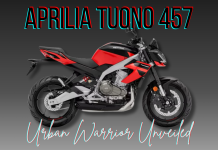The sub-400cc modern-classic segment has been dominated by Royal Enfield’s Bullet and Classic in recent years because of its practical features.
The renowned brands like Benelli, Jawa, and Honda have spoilt the Indian customers as they get various versions of a modern-classic country.
The modern-classic segment has become so enticing that the manufacturers such as Harley-Davidson and Triumph also seem to want a piece of the market pie.
With such a great variety of options, it is evident that a buyer can get a little confused when choosing the best option.
So, we have shortlisted the iconic models like Jawa 42 2.1 and Honda CB350 to compare their features, styling, and other specifications to help you decide which one best suits the buyer.
Style
In our view, the essence of modern classic motorcycles can trace their design back to models sold decades ago, thus evokes nostalgia.
In this case, Honda CB350 and Java 42 2.1 both are up to the mark and get total points.
The styling of the Honda CB350 is inspired by the original CB350 that was sold globally in the 1970s.
Because chrome plating is synonymous with retro styling, the bike is equipped with chrome fenders, an exhaust suspension, and rearview mirrors.
It even gets some colour combinations derived from Honda’s retro models. However, to implore the modern side, the CB350 features a blacked-out engine, wheels, and headlamp cowl.
On the other hand, Jawa 42 2.1 is based on standard 42, which the original Jawa inspired.
However, in Jawa 42 2.1, completely blacked-out components like the engine, exhaust, wheels, and other parts give it a personalised look and appearance.
It also gets bar-end mirrors and a mesh headlamp guard to contribute to the fascinating look.
However, the standard Jawa 42 has a relatively high chrome plating on the spoke wheels, engine, exhaust, and suspension.
Features
Well, most modern classics appeal to the contemporary side by providing current functions and features.
But Jawa decided to keep the features classic and provide 42 2.1 with traditional lighting, ABS as a small digital display is incorporated in the single-pod instrument cluster.
In contrast, Honda provides an extensive feature list for the CB350. First, it is equipped with full LED lighting for the headlamp, tail lamp, and turn signals.
It also has Honda’s Selectable Torque Control system and a digital display which displays essential information.
In addition, the instrument cluster is equipped with Bluetooth. Once connected to the smartphone application, it can notify the driver of incoming calls or messages and supports music playback.
Engine
Considering the model Jawa 42 2.1, the motorbike is equipped with a 293 cc single-cylinder engine that complies with the standard Jawa.
The engine has a liquid cooling system, producing a power output of 26.9 bhp with a maximum torque of 27.02 Nm.
The model has a six-speed gearbox. On the other hand, the Honda CB350 uses a 348 cc, an air-cooled, single-cylinder engine with a five-speed gearbox.
The engine has an output of 20.7 bhp with a maximum torque of 30Nm. Both machines have very similar characteristics and performance.
They are easy to manage and provide their version of the typical exhaust note associated with modern classics.
However, the CB350 unit seems more refined, whereas Java provides top-end functions.
Suspension and braking
The suspension characteristics of CB350 and Jawa 42 are almost the same. Both the models have telescopic forks on the front and twin shock absorbers at the rear.
Also, they are similar in terms of being light and comfortable for the city rides.
The hardware is entirely different. The braking system in Jawa uses a 280mm disc on the front and a 240mm disc at the rear.
While the CB350 uses a larger 310 mm disc on the front and the same 240mm disc at the rear.
In addition, the Java 42 2.1 uses a combination of wheels as an 18-inch alloy wheel on the front and a 17-inch wheel at the rear, while the CB350 is equipped with a 19/18 alloy wheel combination. Both motorcycles have tubeless tires.
Fuel-efficiency
On the test track, the Honda CB350 has an average speed of 32 kmpl. It has a 15-litre fuel tank. It proffers a distance of 450 km before getting refuelled.
Whereas the Jawa 42 has a slightly higher average of 34.2 kmpl. Jawa 42 has a fuel tank with a capacity of 14-litres.
The bike can cover approximately 478 km when the tank is full.
Price
Jawa 42 is launched with a price starting from Rs 1,63,000 and reaching a maximum of Rs 1,83,000 for version 2.1.
On the other hand, Honda offers two models for the Honda CB350- DLX and DLX Pro, priced at Rs 1.89 lakh and Rs 1.95 lakh, respectively.
Conclusion
Jawa 42 2.1 is a cheaper and affordable option among the two. You can also choose Classic Charm 42 or Custom 42 2.1.
We cannot ignore the lack of modern equipment. On the other hand, the Honda CB350 makes up for its higher price tag with an extensive feature list.
It also provides a better engine and consistent quality of parts than Java 42. Therefore, as a product, Honda CB350 seems to be an ideal choice here.
But before you rush to invest in the CB350, here is a piece of important information.
Honda only sells motorcycles through its BigWing showroom, which are much lesser nationwide than the Jawa showrooms.
It signifies that if there is no BigWing showroom in your city, you may have to travel a long way to get the Honda CB350 serviced.



































